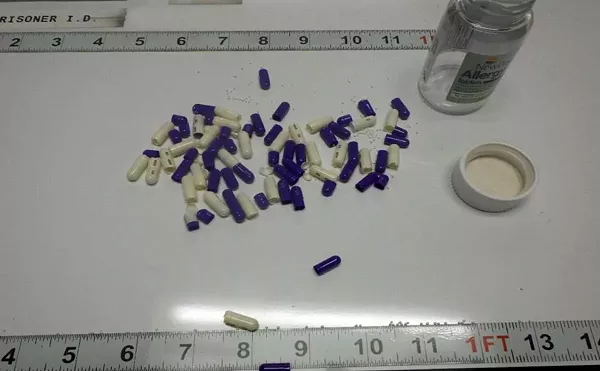Following the release of the list, two headlines caught our eye.
From the Detroit News at 3:23 p.m. Sept. 1:
From the Detroit Free Press at 9:17 p.m. Sept. 1:
That's right,
Of the 15 schools in the Education Achievement Authority — a state-run district that was created based off the 2011 Top to Bottom List — 13 of them are listed as failing once again, and one — Phoenix Elementary-Middle School — is listed as being closed.
That means that schools that were taken out of Detroit Public Schools in the 2012-13 school year (i.e. taking funds away from the traditional school district), and placed in a state-controlled district under the auspices of a "turn around" (that DPS couldn't do it itself) are still — four years later — on the list of worst performers. Ninety-three percent of the schools in the EAA are still considered, at least based on test scores, as under-performing schools.
"Snyder, who came into office promising voters relentless positive action, has instead disenfranchised local electorates while delivering relentlessly negative — even catastrophic — results," Wayne State University School of Education associate professor Thomas Pedroni tells MT, referring to the EAA — which Snyder orchestrated in the spring of 2011 — as well as the Flint water crisis, and the governor's creation of PA436.
While it is likely that the EAA will cease to exist in the coming years — Eastern Michigan University, which helps authorize the district, voted in February to withdraw their support in June 2017 — the continued failure of the district raises questions about experimentation and state takeovers.
As former MT investigative reporter Curt Guyette exposed — via a bevy of Freedom of Information Act requests — in September 2014: Much of the curriculum used in this "recovery district" has never been tested before, and was rather a beta program created by for-profit tech company Agilix Labs, who essentially used the EAA — with the permission of its appointed board — to test a new learning management system that it hoped to then market to other districts.
"The companies needed the EAA's students to do well in order to prove the effectiveness of their products when making sales pitches to other schools and districts," wrote Guyette, who found a number of back-and-forth emails between EAA officals, Agilix, and a company called the School Improvement Network [SINET] indicating that the software was riddled with bugs and a headache for teachers and students.
"The EAA needed the companies to do well, so that more money could be funneled back into the product improvement that would, conceivably, promote the kind of student advancement that would attract even more kids, and the state funding attached to them, to the EAA classrooms."
Who loses in this scenario? Kid who — if they stayed in the EAA — find themselves in continually failing schools four years later.
While the EAA — and it's schools — may be on the way out, questions remain as to what will happen, in the future, to schools on such bottom 5 percent lists. Following news of a controversial DPS rescue package being passed in Lansing, news got out that in the future the State Reform Office — which Snyder took over in 2015 — would be closing schools next June that were on the priority list for three consecutive years (including scores of Detroit schools).
While it's now unclear if this will still happen so soon — this week Snyder's education adviser announced that the DPS legislation may reset the timer and give Detroit schools three more years to improve test scores before closures would happen — many are still worried about how this will effect Detroit families and students. And more so, why attention isn't being paid to the quite obvious failures of the EAA — a solution that at one point was even proposed as a statewide plan.
"The EAA, ostensibly designed to lift a few opaquely selected schools out of the bottom five percent in state-mandated test scores is an example of a catastrophe," says Pedroni. "Yet, even after Flint, Emergency Management and his EAA, the governor remains relentlessly and fastidiously certain that his State Reform Office, clawed away from the state-elected Michigan Department of Education leadership, and led by a failed charter school grantee, who delivered nothing with $110,000 in taxpayer funds, will produce positive actions."






